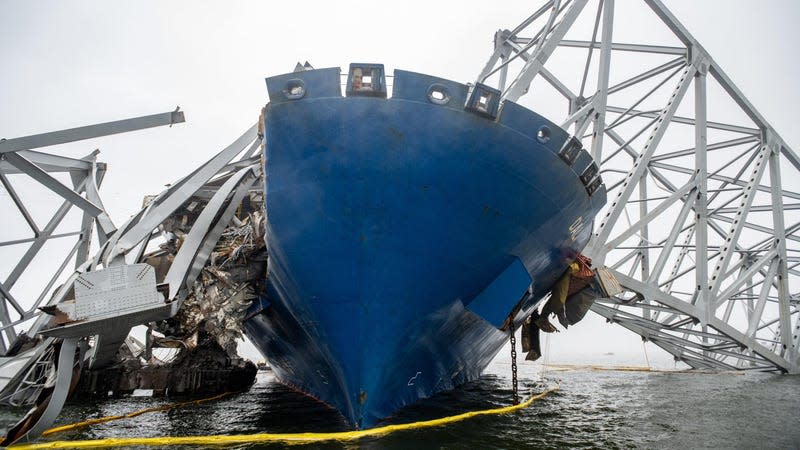At Least 424 Cargo Ships Lost Power In U.S. Waters Over The Last 3 Years

After the MV Dali brought down the Franklin Key Bridge in Baltimore, folks wondered how this could happen, and could it happen again? As if to answer this unspoken question, it almost immediately happened again: the APL Qingdao lost power near the Verrazano-Narrows Bridge in New York Harbor earlier this month.
The really bad news is, Americans have been lucky so far.
Ships are complex machines the size of buildings, so it’s a little surprising to hear the process for handling them around American waters is rather loosey goosey. The Washington Postfound that at least 424 cargo ships over 600 feet in length lost power in U.S. waters in the last three years. Ships keep getting bigger, but the ports they operate in stay the same size — a disaster in the making, according to the Post:
Adding to the danger, experts say, is a lack of consistent rules on when cargo ships should be escorted by tug boats that can keep them on course even if engines turn off. While tugboats escorted the Qingdao, as was called for under local guidelines in the New York area, those attending to the Dali departed before it struck the bridge in Baltimore, where such decisions are left to ship captains and local pilots, the specially trained sailors who guide ships in and out of ports.
Container ships like the Dali and the Qingdao have doubled in size over the past two decades, experts said, while some American ports — built up over centuries around busy and cramped waterways — have struggled to adapt.
“I don’t think we’ve understood fully the consequences of these ships, of these large ships, operating in these ports,” said Aaron Davenport, a retired senior Coast Guard officer and expert in maritime safety.
Causes for the power loss ranged from derelict equipment to human error. Well, we in the U.S. had a pretty clear illustration of the consequence of giant cargo ships losing power in March. Currently, estimates for clearing enough wreckage to re open the Port of Baltimore is in the weeks, let alone rebuilding the Key Bridge. It seems like we might need an even bigger disaster before anything changes.
Joseph Ahlstrom, a professor at the State University of New York’s Maritime College, said in an interview that the frequency of propulsion loss points to a risk that must be better managed. Ahlstrom said he hopes the use of tugboats — which routinely help ships dock and undock but can also guide vessels that have lost propulsion to safety — would become more widespread after the Baltimore disaster.
“Most regulations are written in blood,” Ahlstrom said. “It takes something like this for people to say, ‘Whoa, we should do something.’”
You’d think we’d have learned something from the Ever Given, the giant cargo ship which blocked global shipping for almost a week back in 2021. But like many of the lessons of 2021, nothing changed and cargo ship are as big — and potentially dangerous — as ever.

